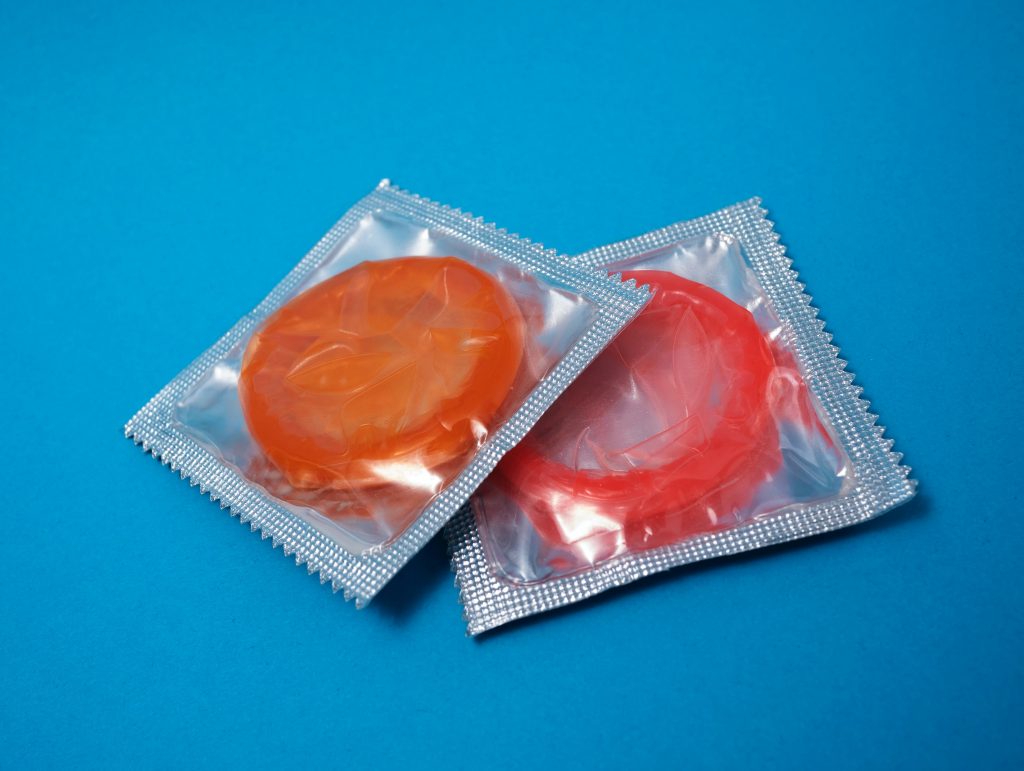3 STIs you can catch even if you use a condom
While condoms do provide protection against most sexually transmitted infections (STIs), some infections can be passed through skin-on-skin contact alone. It is important to get clued up on which STIs you may be at risk of.
The primary function of a condom is to prevent the transmission of bodily fluids such as semen, vaginal secretions, and blood. In turn, this can help to avoid pregnancy and sexually transmitted infections (STIs) during sexual intercourse.
Transmission of most STIs, such as Chlamydia, Gonorrhoea, and HIV can be prevented with a condom. When used correctly, as a contraceptive method, condoms are around 98 percent effective, meaning that 2 out of 100 people will become pregnant in a year [1].
However, even if a condom is worn during sexual contact or intercourse, some infections can be passed by skin-to-skin contact. So, let’s discuss three STIs you can catch, even if you use a condom.
Worried about STIs? Order Better2Know’s Full STI Screen Home Test

1. Molluscum Contagiosum
Molluscum Contagiosum is a fairly common skin infection that can cause round, firm, painless bumps that can appear anywhere on the skin. These bumps, ranging in size from a pinhead to a pencil eraser, are typically skin-colored, pink, or the same color as your skin.
Molluscum Contagiosum spreads through skin-to-skin contact and contact with infected objects. Though most common in children, the virus can affect adults as well, and is often passed on through sexual contact.
Anyone who gets shouldn’t be concerned. The virus is harmless, and any skin blemishes that results from it usually clear up between 6 months and two years.
2. Herpes
The Herpes Simplex Virus (HSV) can be transmitted through oral, vaginal or anal contact with an infected person. However, condoms don’t always cover the area that is shedding the virus during an outbreak. The virus can cause sores to appear around the mouth, genitals or anus. HSV-1, or oral Herpes, causes cold sores or fever blisters commonly around the mouth and lips. HSV-2, or genital Herpes, causes sores to form usually around the genitals or anus.
During an active outbreak (when you are most infectious), it is recommended to refrain from sexual activity in order to lower the risk of transmitting Herpes to your partner.
3. Human Papillomavirus (HPV)
Genital Warts are caused by HPV – a family of viruses of which there are more than 140 different types. While Genital Warts are caused by low-risk types of the virus, high-risk types are associated with several different cancers. HPV can be transferred through skin-to-skin contact with areas of the genitals which are not covered by a condom. Condoms have been shown to be effective reducing the transmission of this virus, but the transmission will be more likely if the contact is repeated and prolonged, for example in a long-term relationship.
Take care of your sexual health with Better2Know
Better2Know can help you to take care of your sexual health. If you are concerned that you may have been exposed to an STI, speak to our highly trained sexual health advisors in confidence today by phone or live chat. Our dedicated team is here for you 24 hours a day, seven days a week, to help you gain peace of mind surrounding your sexual health. We can arrange confidential STI testing with fast and accurate results at a clinic near you, with a private nurse visit, or you can order a convenient home test kit.
Book an STI test at a local sexual health clinic today.
Sources
[1] NHS: Condoms
[2] Get the facts: Do condoms protect against all STIs?
[3] Self: These Are The STIs That Condoms Don’t Protect Against
[4] CDC: Condoms and STDs
This article was medically reviewed by Dr. Steve Chapman, 06/11/2024
Categories
- Awards
- Bacterial Vaginosis
- Blood Tests
- Cervical Cancer
- Chlamydia
- Condoms
- Covid-19
- Gardnerella
- Genital Warts
- Gonorrhoea
- Health and Wellness
- Hepatitis A
- Hepatitis B
- Hepatitis C
- Herpes
- HIV
- HIV (AIDS)
- Home Testing
- HPV
- Instant Testing
- MSM
- Mycoplasma
- News
- Non-Specific Urethritis
- PAP Smear
- Pre-Pregnancy
- Sexual Health
- STD Symptoms
- STD Tests and Screens
- STI Transmission
- Stigma
- STIs
- Swab Tests
- Syphilis
- Trichomonas
- Ureaplasma
- WSW
- Zika
